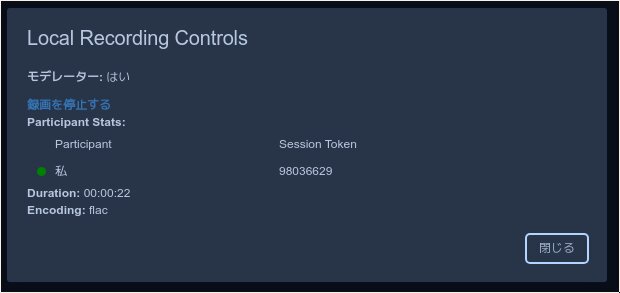
Jitsi tries to minimize this by having simulcast and features like Last N The downside of this wouldīe on the client-side as they would experience higher CPU and bandwidth usage as the number of participants grows. Another good side of this is that the quality of the videos is expected to be great as the videobridge does not do any mixing and simply relays the streams. Performance evaluation test a single videobridge can handle 1000 video streams at 550 Megabits 20% CPU which is really good. SFU modal is resource efficient compared to MCU modals. Jitsi Videobridge follows the first approach as it forwards the incoming streams to all clients who are connected to the videobridge. The central server which handles all the streams of clients either by forwarding the incoming streams to all clients (SFU) or mixing the incoming streams and forwarding a single stream to everyone(MCU). When building conferences with WebRTC which are not peer to peer most solutions adapt some sort of media server which act as the It's an XMPP Server component and most importantly it's WebRTC compatible and open source. The project is a fork of thus proper thanks are in order to the original contributors.In short Jitsi Videobridge is the media server of Jitsi Meet. The dumps generated can be imported and visualized using this tool Authors and acknowledgment The s3 dump can be visualized, giving you an almost chrome://webrtc-internals view of the participants sessions see Importing the dumps. When a participant leaves a conference, the server will have a complete overview of the gum and peer connection flows.Īt this point the server will begin extracting a “feature set”, which is sent to a database, once this is complete the statistics dump is stored on s3. RTCPeerConnection methods are also hooked into and parameters sent to the server: Data such as parameters which gum used and the outcome of the operation is sent to the server.Ĭonstructor parameters are sent to the server.īy having control over the c’tor the client adds listeners to several events of interest on a newly created peer connection object, such as.ĭata regarding each event is sent to the server. The client overwrites and proxies the following functions and associated events: When using ontop of adapter it is typically not necessary (and potentially harmful) to shim the webkit and moz prefixes in addition to the unprefixed version.
Jitsi meet stats Pc#
If you need things like a client or conference identifier to be sent along, the recommended way is to use the legacy peerconnection constraints when constructing your RTCPeerConnection like this: var pc = new RTCPeerConnection(yourConfiguration, ) For instance lib-jitsi-meet doesn't directly call these functions but rather has references, thus initializing rtcstats after lib-jitsi-meet would result in the original methods being called and RtcstatsInit(trace, pollInterval,, connectionFilter) īecause GUM and RTCPeerConnection are overwritten, rtcstats needs to be initialized before any aliases to them are created. * - callback used to filter out RTCPeerConnections based on their config. Almost all browser now support the RTCPeerConnection API so it can be left empty * - legacy RTCPeerConnection prefixes for older browser compatibility. * - interval at which getStats is called and sent. * Initialises rtcstats, overwrites GUM and RTCPeerConnection and starts sending data. * - callback for handling websocket closed event.Ĭonst trace = traceInit(rtcstatsEndpoint, handleTraceWSClose) * - rtcstats-server endpoint ex: "wss:\\:3000"

* Initialises the trace object which is the channel that rtcstats uses to send data. Import traceInit from 'rtcstats/trace-ws'

In order to initialise rtcstats the following steps are required: import rtcstatsInit from 'rtcstats/rtcstats' Originally rtcstats had a more generic approach and was bundled for maximum compatibility, this created issues when importing into jitsi-meet so that option is no longer supported, it now relies on jitsi-meet to do bundling and transpiling. The project is organised as simple ES6 modules that can be easily imported into jitsi-meet. On top of that, each newly created RTCPeerConnection has a configured interval set for it, which calls getStats periodically, this too is sent to the rtcstats-server. In short, once integrated, the library overwrites GUM and RTCPeerConnection functionality and proxies most calls and events going through them, sending the gathered data via a websocket to the rtcstats-server. It's meant to run in a browsers/electron environment which exposes GUM and WebRTC standard functionality. This repo represents the client side component. The rtcstats ecosystem consists of a javascript client library which sends statistics and a node.js server which gathers and processes them. Server repository can be found here rtcstats-servers. Rtcstats client fork tailored for jitsi-meet integration.


 0 kommentar(er)
0 kommentar(er)
